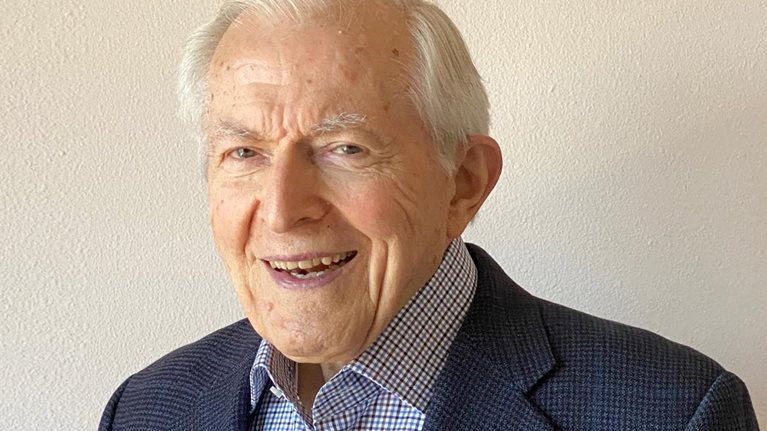In this edition of Author Talks, McKinsey Global Publishing’s Mary Kate Crowe chats with University of Oxford professor Paulo Savaget about his new book, The Four Workarounds: Strategies from the World’s Scrappiest Organizations for Tackling Complex Problems (Flatiron Books, March 7, 2023). Savaget shares why unconventional approaches to problem solving—reinterpreting rules, repurposing resources, and changing mindsets—may bring the most positive results. An edited version of the conversation follows.
Why did you write this book?
This question is actually something that I started thinking about more after I had already finished this research. When I started conducting this research, I had worked for quite a few years as a consultant, as an entrepreneur, so [I was] very engaged in translating knowledge from academic settings to the realities of companies—social enterprises, for example.
Once I finished this research, I got a lot of feedback from people from all walks of life: not only academics, but also people with whom I had already worked and people with whom I had interviewed, for example, in other international organizations and so on.
Many of them said that my research could be turned into a book because the research resonated with a lot of people. It also resonates a lot with people in professional settings, in their daily lives.
I had the desire to communicate with many different audiences, not only restrict [myself] to abstract concepts that normally stay in academia. I wanted to make sure that this knowledge could be used by many different organizations and individuals.
What surprised you while researching and writing this book?
This research was very exploratory. I didn’t start with the goal of studying workarounds. I bumped into workarounds after I had already started. This research was mainly driven by an interest, but also a frustration. I was frustrated with my previous experiences working as a consultant. I had worked with many organizations worldwide on projects that ranged from the evaluation of projects with traditional populations in the Amazon to working in favelas in Brazil to [working with] large organizations—OECD, for example—and in more business-like contexts.
I realized that my reports were relatively similar in terms of recommendations. I was already working with these ideas of systems thinking, systems design, and realized that the work I was doing wasn’t necessarily engaging with all the ways of approaching change. It was very much focused on single assumptions of making big, systemic changes.
But I had completely ignored other ways of making change in systems. When I decided to do this research, I got this curiosity about hackers, computer hackers, because they break into computer systems and make change so quickly and so resourcefully. I thought that no one was looking at them, not at how they approached problems, how they make change in these very complex systems. Once I started working with computer hackers, I had a lot of surprises throughout the process.
One [surprise] when I started working with hackers was, “Can other organizations be like hackers? Could I understand hackers [enough] to create a framework, or a playbook, that could help organizations make impact more quickly and more resourcefully?” Then after working with hackers, I realized that many other organizations were already hacking, and that hacking is not limited to computer systems.
It applies to all kinds of systems, like education systems, sanitation, healthcare, financial systems; whichever system you can think of, you can hack. There were many organizations—these organizations that I call scrappy because they’re feisty, they’re resourceful, they operate in the margins of systems.
They were approaching problems in very unconventional ways, very creative, very flexible, adaptive ways, sometimes out of necessity. But that stimulated them to create amazing interventions that have sometimes outsize impacts, considering the budgets they had and the access to resources they had.
Which organizations featured in your book were you particularly impressed by?
I’m impressed by so many organizations. My book covers policymakers, individuals, nonprofits—organizations that are now very big, like Airbnb. But there’s an organization that inspired me to look into different ways of working around, an organization that I worked with very closely in Zambia.
It’s an organization called ColaLife that was founded by two social entrepreneurs. They realized that you don’t find lifesaving medicine in the remote regions of sub-Saharan Africa. So, in a country like Zambia, diarrhea can be the second-biggest killer of children under the age of five. That’s obscene because diarrhea can be treated with medicines that are extremely affordable, over the counter.
But still, this medicine cannot be found. Even if people have the resources to purchase it, it’s not found in remote regions. So the approach that many healthcare officials have pursued is tackling the obstacle. They identify what prevents medicines from being found. Things like poor infrastructure, for example.
This organization worked around these obstacles when they realized that you don’t find medicines, but you’ll find Coca-Cola in the remotest places on Earth.
So why can’t we take a free ride with Coca-Cola bottles to make medicines available as well? That was the initial workaround that ended up leading to many other workarounds. And with that, they increased the uptake of this medicine from less than 1 percent to more than 40 percent, 50 percent in a matter of a few years.
We don’t have to address a healthcare problem using conventional approaches. We can tap into fast-moving consumer goods. There’s already so much happening in other sectors, other systems. Why can’t we benefit from them and bridge across these silos?
Is it easy to look at a situation like that and be demoralized?
We tend to think of what lacks in a context. That’s our default approach. We end up ignoring that there’s already a lot that exists that could be leveraged—unconventional pairings that could be identified, like using the distribution channel from Coca-Cola to offer diarrhea medicine.
What is the value of deviating from the norm?
All the change-making efforts involve deviance. What I tried to show in my book is that deviance, first, is different from disobedience. You can be disobedient and still conform to the rules.
All the change-making efforts involve deviance. What I tried to show in my book is that deviance, first, is different from disobedience. You can be disobedient and still conform to the rules.
To give an example, I’m from Brazil. When I go to Brazil, I sometimes cross the street when the light is red for pedestrians. I wouldn’t do that necessarily in Germany because when I’m in Germany, no one crosses.
In Brazil, everyone crosses. I’m still conforming to the rules. I’m conforming to the rules of the game because everybody does.
That’s the default: the de facto rules of the game in that specific setting. Workarounds are very powerful mechanisms for deviating from norms, from these rules that constrain us. Rules are not necessarily always positive or desirable.
Workarounds are very powerful mechanisms for deviating from norms, from these rules that constrain us.
There are many rules that might be the dominant ones, even in legislations, that might be unfair. We are constantly challenging them. There are ways of confronting these rules that might lead to backlash. Workarounds won’t do that. They allow you to deviate from a status quo that you consider undesirable and get things done effectively, in a very low-stakes way.
How can workarounds be best applied within a corporate culture where deviance isn’t encouraged?
There are norms, rules, constraints that warrant the opportunities to work around them as well. For example, I reported in my book that some inventions that were created, like Aspirin and the blue LED, were created by people who were deviating from corporate rules and working around all these sorts of obstacles to develop their own personal projects.
Companies can actually stimulate a culture that embraces this flexibility and an adaptive nature that a workaround requires and that this positive deviance also requires. There are many ways of doing this that involve, for example, from a strategy perspective, allowing people to be a bit more pragmatic, be more practical, value imperfection, plan less, but allow people to experiment and pivot based on their experiments.
Workarounds are good ways of getting things done and defying the status quo. But they’re not necessarily people-pleasing solutions. There are many ways of using workarounds. You’ve got to think a little bit about the impact of these workarounds that you may pursue.
What is the myth of the fearless hero visionary, and how does this perpetuate inequality?
This myth of the hero entrepreneur, who is visionary and who knows where we are going and is leading everyone to this, is not only inaccurate, but it’s undesirable as well on so many levels. It recreates and reinforces a very toxic culture in organizations that value some people who are portrayed as if they had special skills and abilities—change-making abilities—as if they know the future, and completely dismisses or ignores the contributions from a lot of other people who made things happen.
What we observe in entrepreneurship, including but not limited to workarounds, is that the most successful leaders are not necessarily visionary.
They provide an environment where people can experiment, where they can test, where they can be flexible. It’s adaptive-management style that works really well. Also, this idea of portraying them as heroes with special skills has been often reproduced by the media, for example, or even by business books, like the myth of the dropout.
Most entrepreneurs do not drop out of school. The school allowed them to build on their networks, build their knowledge and skills, provided a safe environment for them to test early-stage ideas.
Even people who became very famous for dropping out like Bill Gates , for example, actually did it with a safety net. His business had shown some success and was already doing relatively well when he left Harvard. This whole myth of entrepreneurs being heroes who do not have fear, who do not have a safety net, who challenge all the odds to pursue their dream is very inaccurate and leads to undesirable behaviors.
For example, the behavior we have noticed these last years with Elizabeth Holmes reproducing this myth of the hero-like entrepreneur that has to behave in this manner according to this entrepreneurial template is inaccurate, has no analytical rigor, and reinforces inequality.
Watch the full interview



